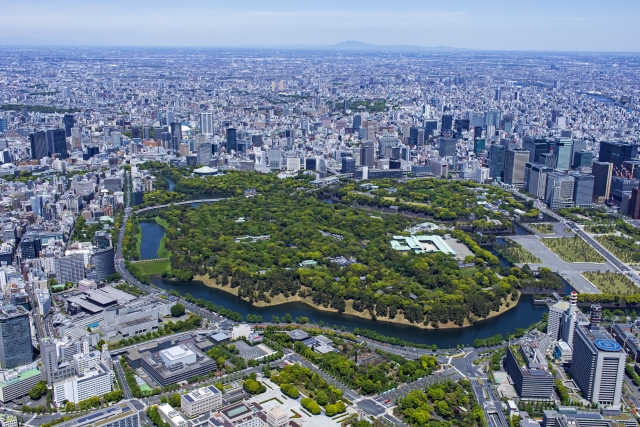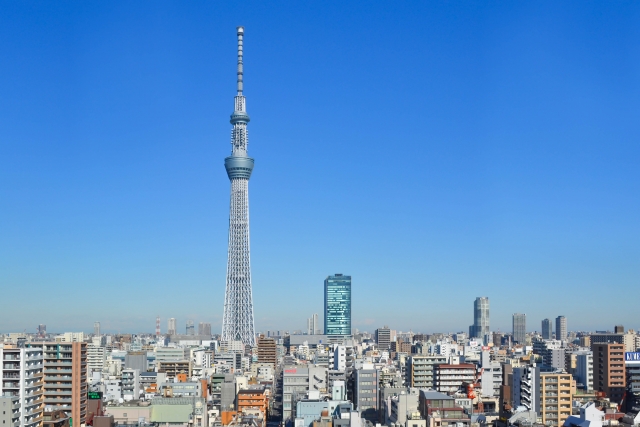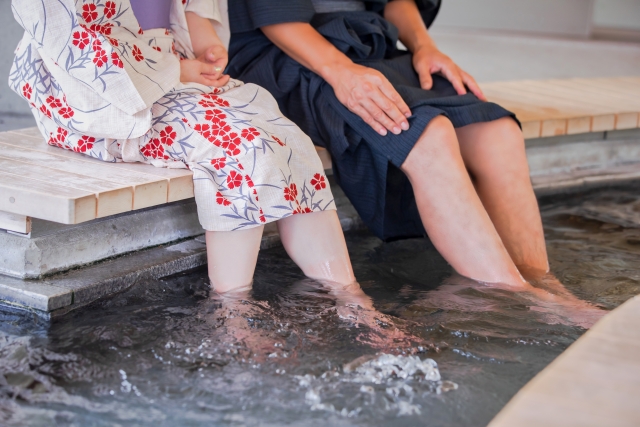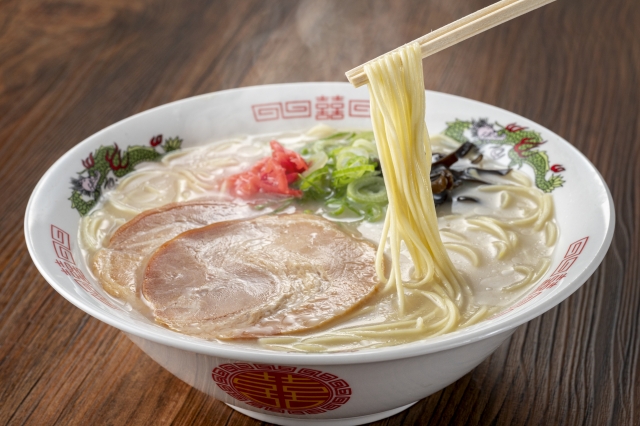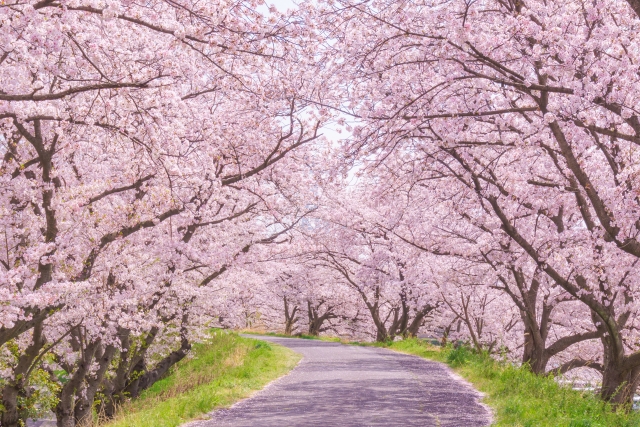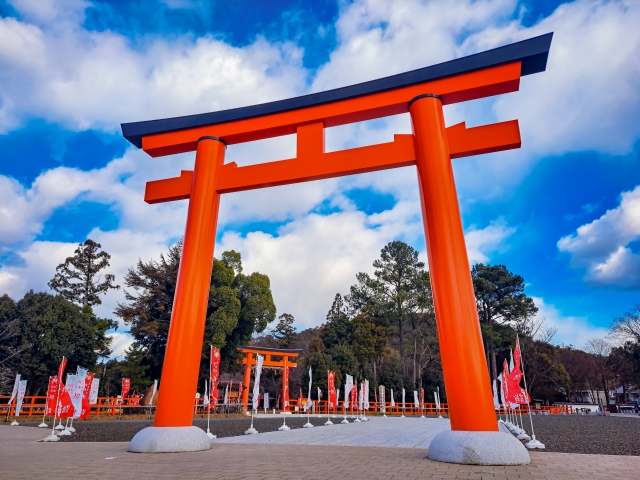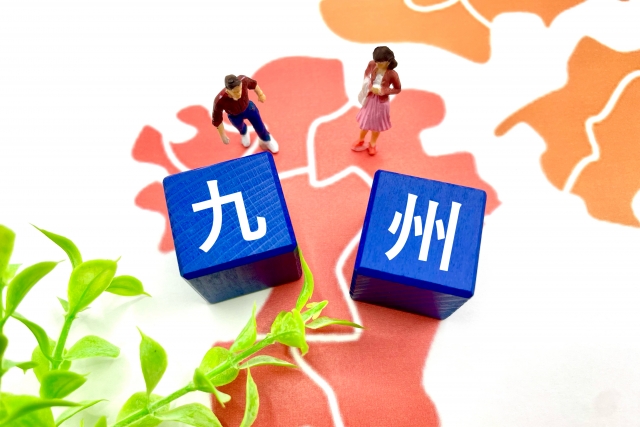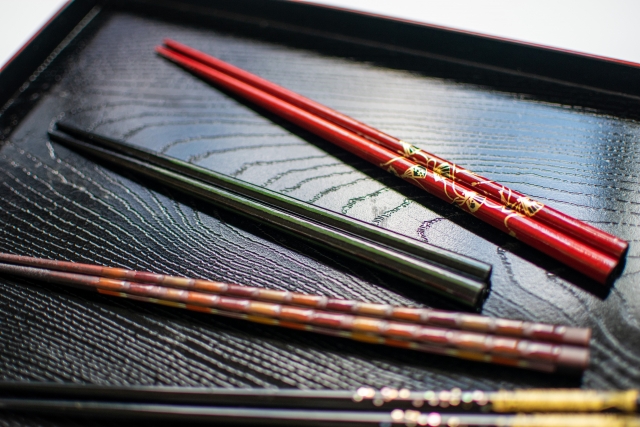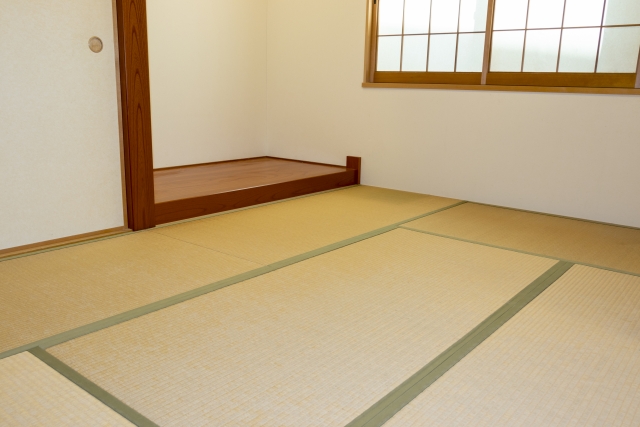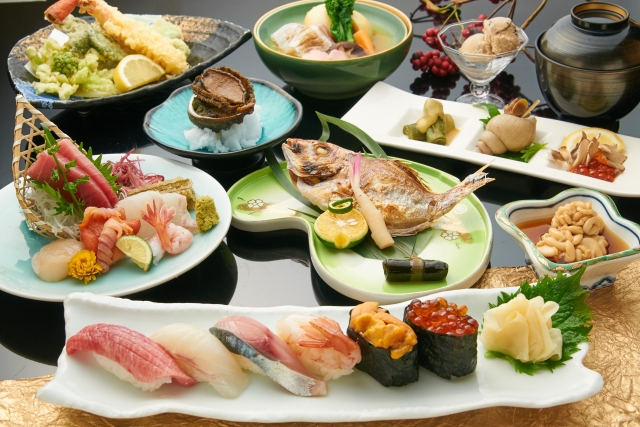The Imperial Palace is a popular tourist spot visited by most of the tourists visiting Tokyo, and as the Emperor’s palace, it is very important to the Japanese people. the size is as big as about 25 Tokyo Domes! Actually, some of the facilities of the Imperial Palace are open to the public: the East Gardens, Kitanomaru Gardens, and the Outer Gardens, of the Imperial Palace, all of which are full of historical buildings that are over 400 years old, the flowers that are beautifully tended throughout the year, and numerous natural features. All of them are free of charge, making it easy to drop by and enjoy. In this article, we will introduce some of the highlights and ways to enjoy the Imperial Palace area.
 The Imperial Palace was moved to its current location in the early Meiji era(1868-1912). Before that, it was located in Nara or Kyoto.
In ancient times, the emperor’s residence was located in what is now Nara Prefecture. According to the myths in books such as “Nihon Shoki” and “Kojiki,” the emperor’s residence was once located in the southeastern basin of Nara Prefecture. Later, after the capital was moved to Heian-kyo in Kyoto in 794, the imperial residence was settled in the Kyoto Imperial Palace. After this, the Imperial Palace remained in the same location for more than 1000 years without being moved from Kyoto until the Meiji Restoration. With “the restoration of the imperial rule” at the end of the Edo period (1603-1868), the real power of politics returned to the hands of the emperor from the samurai for the first time in about 700 years. Then the Meiji government changed the name of the capital, Edo, to “Tokyo”, and moved the Imperial Palace to the site of Edo Castle, where the Shogun had lived. It is believed that the move to Tokyo, the capital of the East as opposed to Kyoto, the capital of the West, was intended to impress upon people both at home and abroad that the Emperor ruled the whole of Japan. And from the Meiji era until the end of the Pacific War, the Emperor’s residence was mainly called by a different name, “Kyujo”. It was 1948, after the war, that the name was changed to the current one, “Imperial Palace” or “Kokyo”. The word “castle” was associated with military power, so the softer “Imperial Palace” was chosen as the appropriate term to describe the new emperor. Since then, it has been a rule to use the word “Imperial Palace” until now.
The Imperial Palace was moved to its current location in the early Meiji era(1868-1912). Before that, it was located in Nara or Kyoto.
In ancient times, the emperor’s residence was located in what is now Nara Prefecture. According to the myths in books such as “Nihon Shoki” and “Kojiki,” the emperor’s residence was once located in the southeastern basin of Nara Prefecture. Later, after the capital was moved to Heian-kyo in Kyoto in 794, the imperial residence was settled in the Kyoto Imperial Palace. After this, the Imperial Palace remained in the same location for more than 1000 years without being moved from Kyoto until the Meiji Restoration. With “the restoration of the imperial rule” at the end of the Edo period (1603-1868), the real power of politics returned to the hands of the emperor from the samurai for the first time in about 700 years. Then the Meiji government changed the name of the capital, Edo, to “Tokyo”, and moved the Imperial Palace to the site of Edo Castle, where the Shogun had lived. It is believed that the move to Tokyo, the capital of the East as opposed to Kyoto, the capital of the West, was intended to impress upon people both at home and abroad that the Emperor ruled the whole of Japan. And from the Meiji era until the end of the Pacific War, the Emperor’s residence was mainly called by a different name, “Kyujo”. It was 1948, after the war, that the name was changed to the current one, “Imperial Palace” or “Kokyo”. The word “castle” was associated with military power, so the softer “Imperial Palace” was chosen as the appropriate term to describe the new emperor. Since then, it has been a rule to use the word “Imperial Palace” until now.
 The Imperial Palace area is divided into three major areas: the East Gardens and the Outer Gardens of the Imperial Palace, which can be strolled without reservations, and the Inner Palace, which can be visited with advance reservations. The total area is about 2.3 million square meters. Just a 15-minute walk from Tokyo Station, it is a true urban oasis of nature in the midst of huge buildings. There are many benches in the Imperial Palace Outer Gardens, where you can take a rest and enjoy a relaxing stroll through the beautiful black pine forest.
The Imperial Palace area is divided into three major areas: the East Gardens and the Outer Gardens of the Imperial Palace, which can be strolled without reservations, and the Inner Palace, which can be visited with advance reservations. The total area is about 2.3 million square meters. Just a 15-minute walk from Tokyo Station, it is a true urban oasis of nature in the midst of huge buildings. There are many benches in the Imperial Palace Outer Gardens, where you can take a rest and enjoy a relaxing stroll through the beautiful black pine forest.
 The statue of Masashige Kusunoki, which stands in the southeast corner of the Imperial Palace Outer Gardens, is one of the three most famous bronze statues in Tokyo and a popular photo spot there. The motif of the statue is Masashige Kusunoki, a warlord who was loyal to Emperor Go-Daigo, the 96th emperor of Japan. He is also a familiar figure to Japanese people as he contributed to the fall of the Kamakura Shogunate. The front of his face is facing away from the Imperial Palace because it is considered rude to face the palace. The dynamic shape of the horse is a highlight of the statue, and the beauty of the statue is well balanced no matter which angle you view it from.
The statue of Masashige Kusunoki, which stands in the southeast corner of the Imperial Palace Outer Gardens, is one of the three most famous bronze statues in Tokyo and a popular photo spot there. The motif of the statue is Masashige Kusunoki, a warlord who was loyal to Emperor Go-Daigo, the 96th emperor of Japan. He is also a familiar figure to Japanese people as he contributed to the fall of the Kamakura Shogunate. The front of his face is facing away from the Imperial Palace because it is considered rude to face the palace. The dynamic shape of the horse is a highlight of the statue, and the beauty of the statue is well balanced no matter which angle you view it from.
 The Nijubashi Bridge, one of the bridges that spans from the Imperial Palace Square to the palace, was built in 1614 and was rebuilt in 1888 and 1964 to its current form. The beautiful castle in the background is the Fushimi Yagura, which was moved from Kyoto in 1628, and can be seen together with the Nijubashi Bridge. Normally, people are prohibited to enter the bridge, but they are allowed to cross it only on the Emperor’s birthday and during the New Year Greeting.
The Nijubashi Bridge, one of the bridges that spans from the Imperial Palace Square to the palace, was built in 1614 and was rebuilt in 1888 and 1964 to its current form. The beautiful castle in the background is the Fushimi Yagura, which was moved from Kyoto in 1628, and can be seen together with the Nijubashi Bridge. Normally, people are prohibited to enter the bridge, but they are allowed to cross it only on the Emperor’s birthday and during the New Year Greeting.
 Sakuradamon Gate is known as the largest of the existing castle gates, and was damaged in the Great Kanto Earthquake of 1923 and renovated to its current steel and earthen structure. The contrast between the magnificent stone walls and the white earthen walls make it a popular photo spot. It has a double structure with an outer gate and an inner gate, and from the middle of the gates you can see the city of Tokyo in the distance.
I have introduced the statue of Masashige Kusunoki, the Nijubashi Bridge, and the Sakuradamon Gate. Next, let’s check out the sights in the East Gardens area.
Sakuradamon Gate is known as the largest of the existing castle gates, and was damaged in the Great Kanto Earthquake of 1923 and renovated to its current steel and earthen structure. The contrast between the magnificent stone walls and the white earthen walls make it a popular photo spot. It has a double structure with an outer gate and an inner gate, and from the middle of the gates you can see the city of Tokyo in the distance.
I have introduced the statue of Masashige Kusunoki, the Nijubashi Bridge, and the Sakuradamon Gate. Next, let’s check out the sights in the East Gardens area.
 This is a beautiful garden with a pond in the center where you can walk around the garden, which used to be a villa of the shogun. It is a large garden of about 200,000 square meters where you can enjoy a variety of flowers and plants depending on the season, such as plum blossoms in February, azaleas in April, Satsuki in May, irises in June, and autumn leaves in autumn.
The pond in the garden is also home to many small animals such as fish and turtles, and you can see rare varieties of Japanese carp such as the “Hirenaga-nishiki-goi”. The Ninomaru thicket, which is reputed to be a place where you can feel the forest in the city, is also a place where you can fully enjoy nature.
This is a beautiful garden with a pond in the center where you can walk around the garden, which used to be a villa of the shogun. It is a large garden of about 200,000 square meters where you can enjoy a variety of flowers and plants depending on the season, such as plum blossoms in February, azaleas in April, Satsuki in May, irises in June, and autumn leaves in autumn.
The pond in the garden is also home to many small animals such as fish and turtles, and you can see rare varieties of Japanese carp such as the “Hirenaga-nishiki-goi”. The Ninomaru thicket, which is reputed to be a place where you can feel the forest in the city, is also a place where you can fully enjoy nature.
 Edo Castle Tower Ruins, which is the stone wall of the former Edo Castle, is about 11 meters high and more than 40 meters on all sides, making it the largest foundation of castle towers in Japan. The castle was destroyed by fire in 1657, and even today, the blackened stone walls still bear the scars of the natural disaster. The place where Edo Castle used to stand has been turned into an observation deck, which can be accessed via a slope. From the observatory, you can enjoy a 360-degree panoramic view of the rich nature of the Imperial Gardens and the buildings of Tokyo, so be sure to take a look.
Edo Castle Tower Ruins, which is the stone wall of the former Edo Castle, is about 11 meters high and more than 40 meters on all sides, making it the largest foundation of castle towers in Japan. The castle was destroyed by fire in 1657, and even today, the blackened stone walls still bear the scars of the natural disaster. The place where Edo Castle used to stand has been turned into an observation deck, which can be accessed via a slope. From the observatory, you can enjoy a 360-degree panoramic view of the rich nature of the Imperial Gardens and the buildings of Tokyo, so be sure to take a look.
 To join the tour, you need to apply online at the Imperial Household Agency’s online application page, or apply in advance by mail or phone. You can also apply on the day of the visit, although it is on a first-come, first-served basis. Visitors must be 18 years of age or older, and those under 18 must be accompanied by an adult.
The tour time is divided into morning and afternoon hours.
First, you must enter through the Kikyo-mon gate and be given an admission ticket. You will need to return it when you leave the park, so be sure not to lose it. To get to Kikyo-mon, take the subway Chiyoda Line from Nijubashimae Station (Exit 6) and walk for 10 minutes. On the day of your visit, you will need your passport or some other form of identification, so don’t forget it. The guide will be provided for the tour, and you will go around in a group while listening to explanations. You are not allowed to act alone or stop suddenly to disturb others, so please be careful when taking photos. Pets other than guide dogs are also prohibited from entering. When you enter, you will also be checked for the contents of your bag, your body, and if you are bringing in drinks, their contents will also be checked beforehand. That’s how sacred the place is, isn’t it? There are also some stores in the Imperial Palace where you can buy rare souvenirs. Japanese sake, sweets, tableware, furoshiki (wrapping cloth), and other souvenirs are all decorated with the chrysanthemum crest, a motif of the Imperial Family. Be sure to check out the many limited edition items that can only be purchased here. You only have a chance to shop before the tour starts, so be careful to allocate your time carefully. During the tour, you will be able to get a closer look at the building of the Imperial Household Agency, and the Imperial Palace, the residence of the Emperor. Please come and experience Japan’s historical buildings and culture in a solemn atmosphere.
To join the tour, you need to apply online at the Imperial Household Agency’s online application page, or apply in advance by mail or phone. You can also apply on the day of the visit, although it is on a first-come, first-served basis. Visitors must be 18 years of age or older, and those under 18 must be accompanied by an adult.
The tour time is divided into morning and afternoon hours.
First, you must enter through the Kikyo-mon gate and be given an admission ticket. You will need to return it when you leave the park, so be sure not to lose it. To get to Kikyo-mon, take the subway Chiyoda Line from Nijubashimae Station (Exit 6) and walk for 10 minutes. On the day of your visit, you will need your passport or some other form of identification, so don’t forget it. The guide will be provided for the tour, and you will go around in a group while listening to explanations. You are not allowed to act alone or stop suddenly to disturb others, so please be careful when taking photos. Pets other than guide dogs are also prohibited from entering. When you enter, you will also be checked for the contents of your bag, your body, and if you are bringing in drinks, their contents will also be checked beforehand. That’s how sacred the place is, isn’t it? There are also some stores in the Imperial Palace where you can buy rare souvenirs. Japanese sake, sweets, tableware, furoshiki (wrapping cloth), and other souvenirs are all decorated with the chrysanthemum crest, a motif of the Imperial Family. Be sure to check out the many limited edition items that can only be purchased here. You only have a chance to shop before the tour starts, so be careful to allocate your time carefully. During the tour, you will be able to get a closer look at the building of the Imperial Household Agency, and the Imperial Palace, the residence of the Emperor. Please come and experience Japan’s historical buildings and culture in a solemn atmosphere.
 How was it? The Imperial Palace is a popular spot that attracts tourists from all over the world due to its deep history. You can take a casual stroll through the East Gardens and the Outer Gardens of the Imperial Palace, or visit the Imperial Palace to get a closer look at Japan’s Imperial Family. There are many more things to see and do in the Imperial Palace area than I have mentioned here. Please come and visit the Imperial Palace, a place filled with the charm of Japan.
How was it? The Imperial Palace is a popular spot that attracts tourists from all over the world due to its deep history. You can take a casual stroll through the East Gardens and the Outer Gardens of the Imperial Palace, or visit the Imperial Palace to get a closer look at Japan’s Imperial Family. There are many more things to see and do in the Imperial Palace area than I have mentioned here. Please come and visit the Imperial Palace, a place filled with the charm of Japan.
Contents
history of the imperial palace
We would like to introduce you to the enchanting Kyoto, an elegant stage where a thousand years of history plays out.
Imperial Palace grounds – Imperial Palace Outer Garden area
An urban oasis
The statue of Masashige Kusunoki, who was loyal to the emperor
Nijubashi Bridge
Sakuradamon Gate
Imperial Palace grounds – East Imperial Gardens area
Ninomaru Garden to enjoy nature to the fullest
Introducing the history and characteristics of Japanese gardens, and recommended gardens


